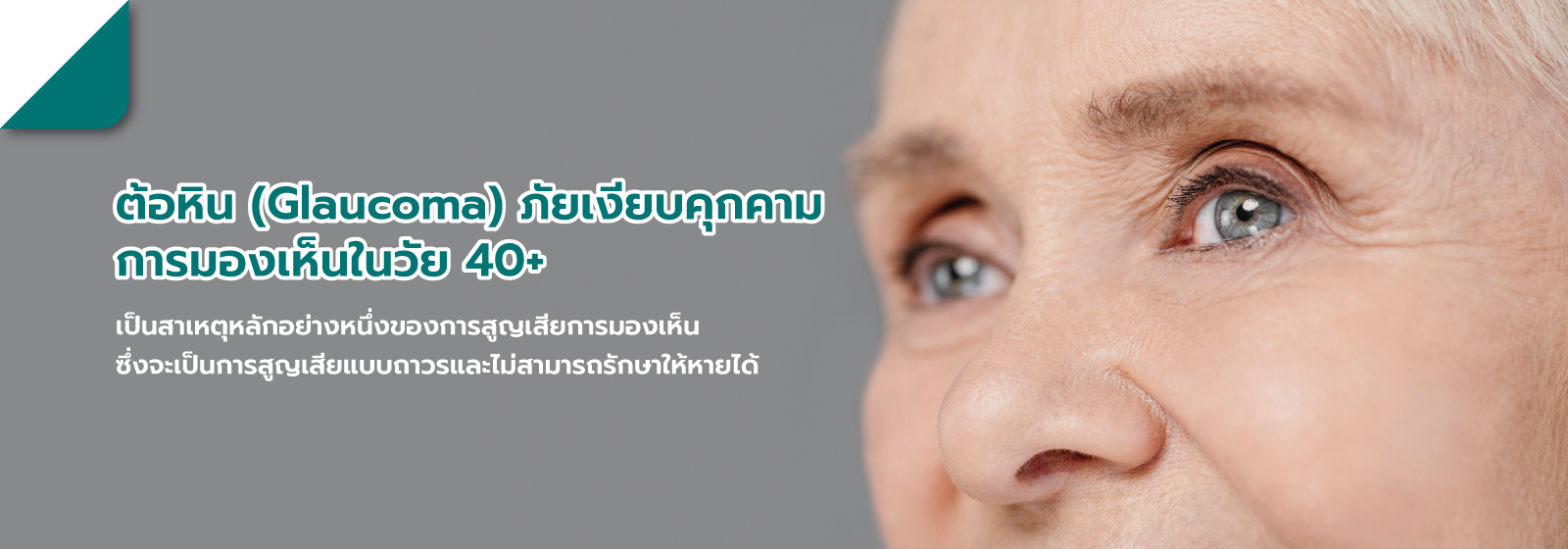
Glaucoma poses a silent threat to vision, especially in individuals aged 40 and above.
Glaucoma poses a silent threat to vision, especially in individuals aged 40 and above. Often, patients may not notice any abnormalities until the disease progresses significantly, leading to irreversible vision loss.
Glaucoma does not manifest with visible changes or the formation of stones in the eyes. Instead, it stems from the degeneration of cells and nerve fibers in the optic nerve, altering the transmission of visual signals to the brain. This results in changes in the visual field or the width of the field of vision. In the early stages, there may be a loss of peripheral vision while central vision remains intact. As the disease progresses, the field of vision gradually narrows, making it increasingly difficult for patients to notice. Eventually, vision loss becomes apparent, and blindness may ensue. Glaucoma may also be associated with high intraocular pressure or not.
Regular eye examinations, particularly for individuals aged 40 and above, are crucial for early detection and management of glaucoma. Prompt diagnosis and treatment can help preserve vision and prevent irreversible damage.
Glaucoma can be categorized into three types:
- Primary glaucoma: This type of glaucoma occurs without any identifiable external causes.
- Primary open-angle glaucoma: It is the most common form and can be further classified into high-tension and normal-tension glaucoma. The exact mechanism of its occurrence is not fully understood. The progression of the disease is usually slow, and patients often do not notice any abnormalities in the early stages. Most cases are detected through routine eye examinations by optometrists. As the disease advances and peripheral vision loss becomes significant, patients may experience symptoms such as tunnel vision, decreased ability to see in dim light, or decreased adaptation to light and dark environments.
- Primary angle-closure glaucoma: This type is more prevalent in Asian populations and is caused by blockage of aqueous drainage in the eye's angle, leading to increased intraocular pressure. It can be categorized into acute and chronic forms. In acute cases, patients may experience symptoms such as eye pain, redness, blurred vision, seeing halos around lights, and may even have headaches and nausea. This is considered a medical emergency that requires prompt treatment to prevent damage to the optic nerve. Chronic cases may be asymptomatic or present with mild eye or headache symptoms that come and go over months or years.
- Secondary glaucoma: can also be caused by various other abnormalities in the eye. These include diabetic retinopathy, mature cataract, intraocular inflammation, intraocular tumors or growths, eye trauma, complications from eye surgery, prolonged use of certain medications, such as steroids
- Congenital and childhood glaucoma: This type originates from abnormalities in the eye present since birth or early childhood. It results from abnormal drainage of aqueous humor from the eye. Patients may exhibit symptoms such as photophobia, blinking, excessive tearing, or parents may notice larger-than-normal or cloudy corneas in infants.
Risk Factors for Glaucoma:
- High Intraocular Pressure: Considered the most significant risk factor as it's controllable. Higher intraocular pressure increases the risk and progression of glaucoma.
- Age: Older age increases the likelihood of developing glaucoma, particularly primary open-angle glaucoma, which is more common in individuals over 40 years old.
- Systemic Diseases: Conditions like diabetes, hypertension, cardiovascular diseases, or any other conditions affecting blood circulation can increase the risk of glaucoma by affecting blood flow to the optic nerve.
- Family History: Having a family member with glaucoma increases the risk significantly, by 4-5 times.
- Medications: Prolonged use of certain medications, such as steroids in various forms (drops, oral, or injections), can increase intraocular pressure and the risk of glaucoma.
- Eye Trauma or Surgery Complications: Accidents involving the eye or complications from eye surgery can increase the risk of glaucoma.
- Other Eye Conditions: Conditions such as diabetic retinopathy, intraocular inflammation, pigment dispersion syndrome, or certain types of cataracts can increase the risk of glaucoma.
- Refractive Errors: Individuals with severe nearsightedness or farsightedness have an increased risk of angle-closure glaucoma and open-angle glaucoma, respectively.
Diagnosis of Glaucoma:
Glaucoma can be diagnosed through various methods:
- Visual Field Testing: Measures the field of vision to detect any abnormalities or loss of peripheral vision, which is common in glaucoma.
- Tonometry: Measures intraocular pressure to assess the risk of glaucoma. High intraocular pressure is a key indicator of glaucoma risk.
- Comprehensive Eye Examination: Includes examination of the optic nerve, evaluation of the angle structures of the eye, assessment of the corneal thickness, and examination of the drainage angle of the eye.
- Optic Nerve Imaging: Specialized imaging techniques such as optic nerve photography, optical coherence tomography (OCT), and confocal scanning laser ophthalmoscopy (CSLO) can provide detailed images of the optic nerve head to assess its structure and health.
- Gonioscopy: Involves using a special lens to examine the drainage angle of the eye to determine if it is open or closed, which helps in diagnosing certain types of glaucoma.
- Automated Perimetry: Measures the sensitivity of vision at different points in the visual field to detect any loss of vision caused by glaucoma.
Treatment of Glaucoma:
Since vision loss from glaucoma cannot be reversed, the focus of treatment is on slowing down the progression of the disease as much as possible to prevent significant visual impairment that impacts the patient's quality of life. This can be achieved by correcting or reducing the risk factors that contribute to the disease and exacerbate its severity.
Currently, reducing intraocular pressure (IOP) is the most effective way to manage glaucoma. This can generally be done through three main methods: medications, laser therapy, and surgery. Treatment typically begins with medication unless there are specific indications for laser therapy. If medication or laser therapy fails to adequately control intraocular pressure, surgery may be considered to improve the drainage of fluid within the eye.
In cases of secondary glaucoma, it is essential to treat the underlying condition and avoid factors that contribute to glaucoma. For example, if glaucoma is caused by prolonged use of steroids, reducing or discontinuing steroid use may be necessary. It's crucial to consult a doctor before making any changes to medication regimens.
Glaucoma is a chronic disease that gradually leads to the loss of peripheral vision, eventually affecting the patient's quality of life and potentially causing irreversible blindness. The speed and severity of vision loss depend on the type and stage of glaucoma, as well as the effectiveness of treatment. Therefore, patient compliance with treatment and regular follow-up appointments are essential. In cases where medication is prescribed, patients must be diligent in taking their medication and report any issues or side effects to their doctor promptly.
Prevention of Glaucoma:
Since glaucoma cannot be cured, the best prevention is accurate diagnosis from the early stages to receive timely treatment and have a favorable prognosis. This can be achieved by:
- Undergoing regular eye examinations by an ophthalmologist annually, especially for individuals over 40 years old or those with risk factors as mentioned earlier.
- Seeking immediate medical attention if experiencing abnormal symptoms such as blurred vision, eye pain, headaches, red eyes, halos around lights, etc.
- Avoiding self-administration of eye drops for extended periods. It's essential to consult a doctor whenever there are abnormal symptoms in the eyes.
- Managing and controlling diseases that are risk factors or causes of glaucoma effectively. For example, diabetic patients should control their blood sugar levels within normal ranges.
- Using protective eyewear whenever working in professions at risk of eye injuries or accidents.
25 Dec, 2023
 EN
EN
 TH
TH CN
CN

